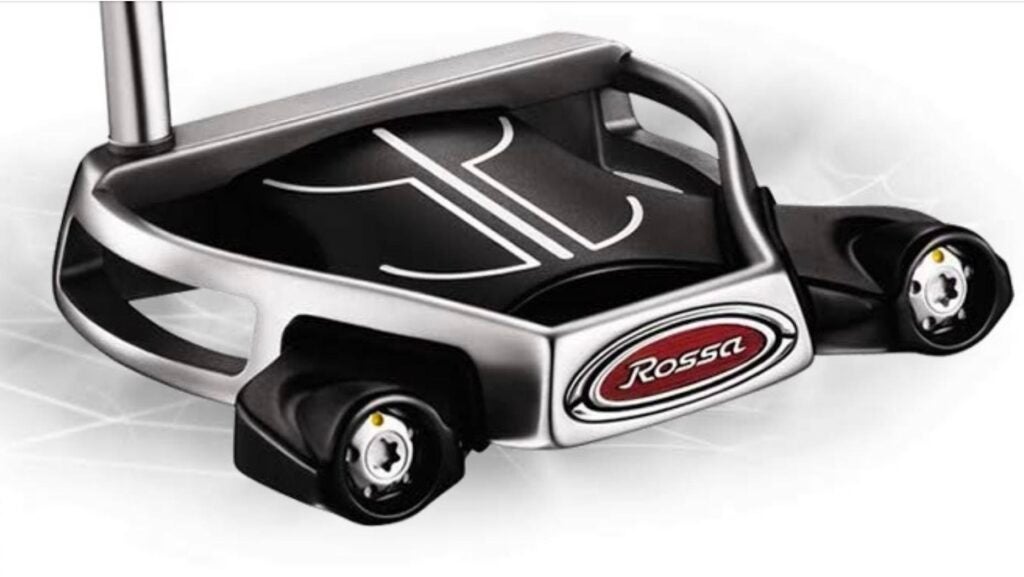There are few putter designs that can be identified by a single name: Anser, Bullseye, Zebra, 2-Ball — you say those names, and almost any golfer on the planet can picture those shapes in their mind. As we get close to the 15-year anniversary of this next putter, I think it’s time that we officially add to the list: Spider.
The world of design is littered with items and objects that were once deemed foreign but are now considered traditional.
In the world of Bullseyes and heel-shafted blades of the 1960s, the Ping Anser was viewed as an absolutely out-of-this-world design but is now thought to be one of the most traditional putter styles on the market today.
With its constant evolution, while remaining true to the design intent, the TaylorMade Spider has earned its place on the Mount Rushmore of putters.
How it started
The original Spider launched in 2008 and was built with the sole function of creating maximum stability and MOI. In its first week on tour 4 putters went into play which is a pretty big accomplishment for a design a lot of people called “beyond ugly”.
By the time the seasonal stop at Torrey Pines rolled around a few weeks later that number tripled to 12 putters in play. Momentum was building as it started weaving its way through the bags of players on tour.
It only took until February when the long bombing J.B. Holmes — who we should note was known as one of the “less skilled” putters on the PGA tour won the FBR Open (now the WM Phoenix Open) in a playoff against Phil Mickelson. That was when things took off like a Spider running when the lights go on — you didn’t think I was going to write this whole thing with making a couple of spider jokes did you?
When the Monza Spider, as it was originally called finally hit retail, Taylormade had only forecast for roughly 30000 putters but they quickly found out that production would need to be increased as orders came flooding in. By the end of the year, they had sold over 200000 Spiders and the unconventional quickly became the new normal.
Evolution
After the original Monza Spider came the next generation, the Itsy Bitsy. It was a play on words from the nursery rhyme and was created based on feedback from tour players and consumers that liked the shape but wanted something in a slightly smaller package. The Itsy Bitsy design became the core of the Spider line and took on a number of iterations including a Ghost white version, an all-black design, and full red made originally at the request of Jason Day.
“We went through 15 different colors and styles of red with Jason before settling on the final color scheme for his Spider”
– Bill Price, TaylorMade’s Senior Director, Product Creation, Putters & Wedges.
The ten-year mark of the Spider introduced a new smaller mallet design the Spider X, which although smaller still offered a higher MOI than the Itsy Bitsy thanks to new materials introduced to the design.
In many ways, the evolution of the Spider X epitomized the ethos of what the designers of the original Spider intended to do – create forgiveness using the most advanced materials possible, and that philosophy continues to this day.
TaylorMade MyTP Putter
The now and the future
The Spider name has become a brand unto itself, similar to how Porsche has the 911 — One iconic name but a lot of models for varied performance.
Taylormade offers everything from the Spider Tour which carries on the original aesthetics of the original Itsy Bitsy shape, the Spider S with a geometric shape and easy-to-align features including “True Path”, the sporty GT models, and the newest Rollback and Notchback designs which bring Spider stability to more traditional mallet shapes.
The new GT model goes even further with the MySpider GT, which allows consumers to build their own putter from scratch by customizing everything from the color of the crown and the wings to the paint and the insert — if you can dream it they can build it.
What the future holds for Spider is yet to be seen but if history is looking to repeat, expect to see engineers continue to push the envelope of design and performance.
